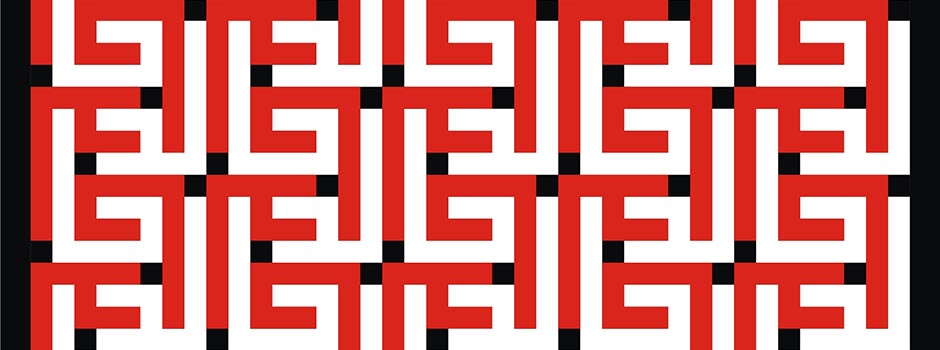
ISLAMIC GEOMETRIC CALLIGRAPHY BY SHAKIL AKRAM KHAN Square Kufic Tessellations
Feb 15, 2014 Calligraphy

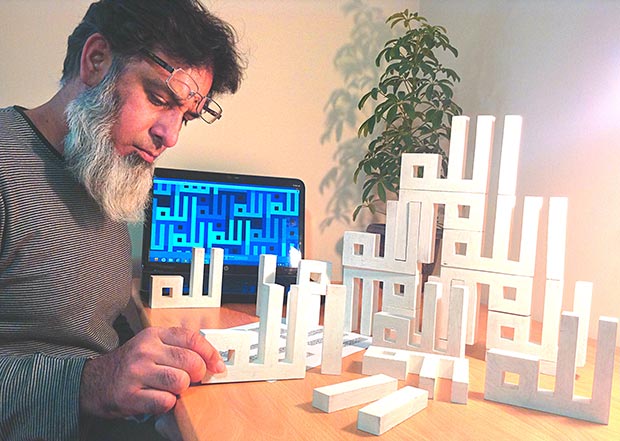 Shakil Akram Khan working at his desk / Courtesy of the Artist
Shakil Akram Khan working at his desk / Courtesy of the Artist
Khan's first contact with Islamic art was in high school while taking a course in architectural drafting. In order to practice drafting skills the students were asked to copy Islamic geometric design. Mesmerized with the complexity and the harmony of geometric shapes Khan became inspired to delve further into this ancient art form that with its universal appeal still look fresh and modern. Along with geometric designs, beautiful and pleasing to the eye as individual units or a systematic unified work of art, Khan became particularly fond of the simplistic square kufic script and thinks "it can be argued that square kufic was the precursor to minimalism, and neo-plastcism. An ancient script that looks avant-garde even today."
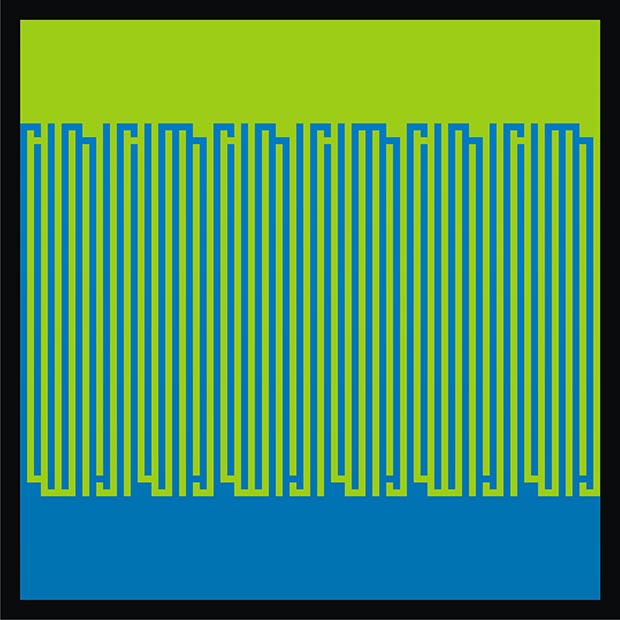 Shakil Akram Khan / Kalimah 2 / Courtesy of the Artist
Shakil Akram Khan / Kalimah 2 / Courtesy of the Artist
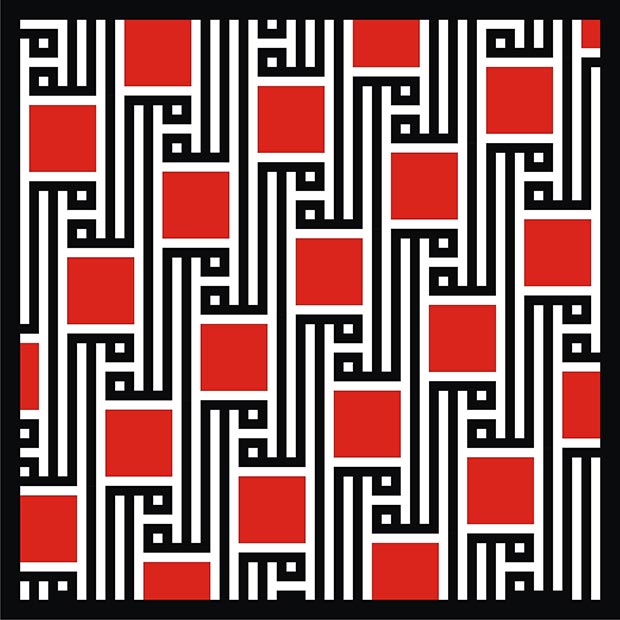 Shakil Akram Khan / Allah 2 / Courtesy of the Artist
Shakil Akram Khan / Allah 2 / Courtesy of the Artist
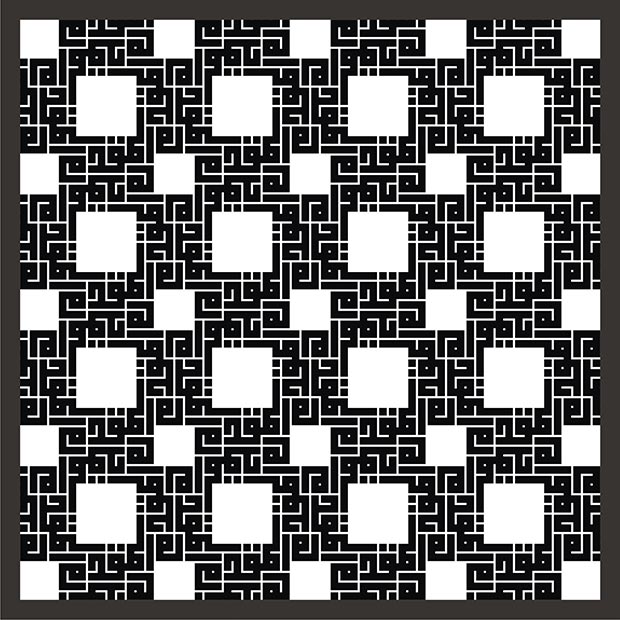 Shakil Akram Khan / Al Muqaddim 2 / Courtesy of the Artist
Shakil Akram Khan / Al Muqaddim 2 / Courtesy of the Artist
 Shakil Akram Khan / Al Mutakabbir / Courtesy of the Artist
Shakil Akram Khan / Al Mutakabbir / Courtesy of the Artist
When asked where his inspiration comes from, Khan told us: "My inclination for straight lines and simple shapes led me to admire the works of artists such as Sol LeWitt, Frank Stella and Piet Mondrian. I had been an admirer of art but never considered being an artist until I discovered the works of M.C. Escher the Dutch artist. Escher had derived a completely new system of tessellations based on complex animal shaped tiles that filled the geometric plane. I was awe-struck. How is it possible. And what made it even more noteworthy was the fact that Escher was inspired by the Islamic tiles in Alhambra, Spain.
This got me thinking. Is it possible to create tessellations based on a purely Islamic premise without animal imagery. I had a passion for square kufic calligraphy. Could I convert the readable script into tessellations. After a great amount of contemplation and exhaustive experimentation I began to draw on grid paper and discovered that it was possible! It was exhilarating to have finally solved the puzzle. Although the unit tile looks so obviously simple and in perfect proportion, the collective puzzle designs remained elusive for centuries. The concept of tessellations of square kufic calligraphy had never been pursued and developed throughout the history of Islamic art. This was a unique discovery and the beginning of a new form of modern Islamic art which I have developed over twenty years."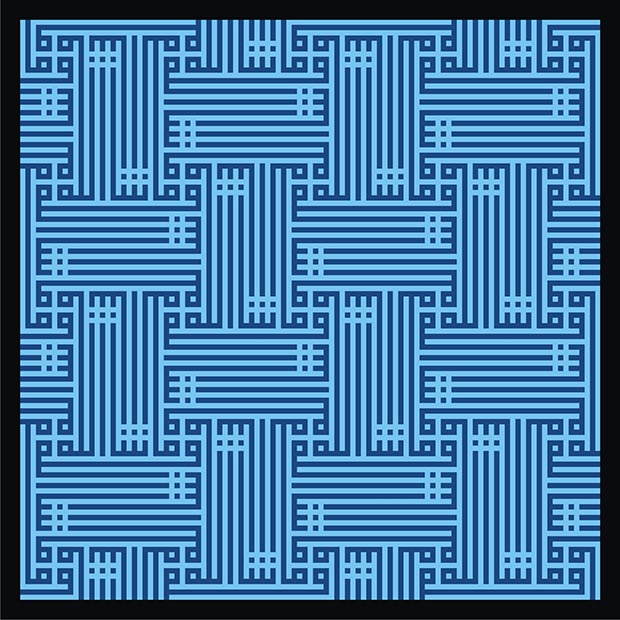 Shakil Akram Khan / MashaAllah 2 / Courtesy of the Artist
Shakil Akram Khan / MashaAllah 2 / Courtesy of the Artist
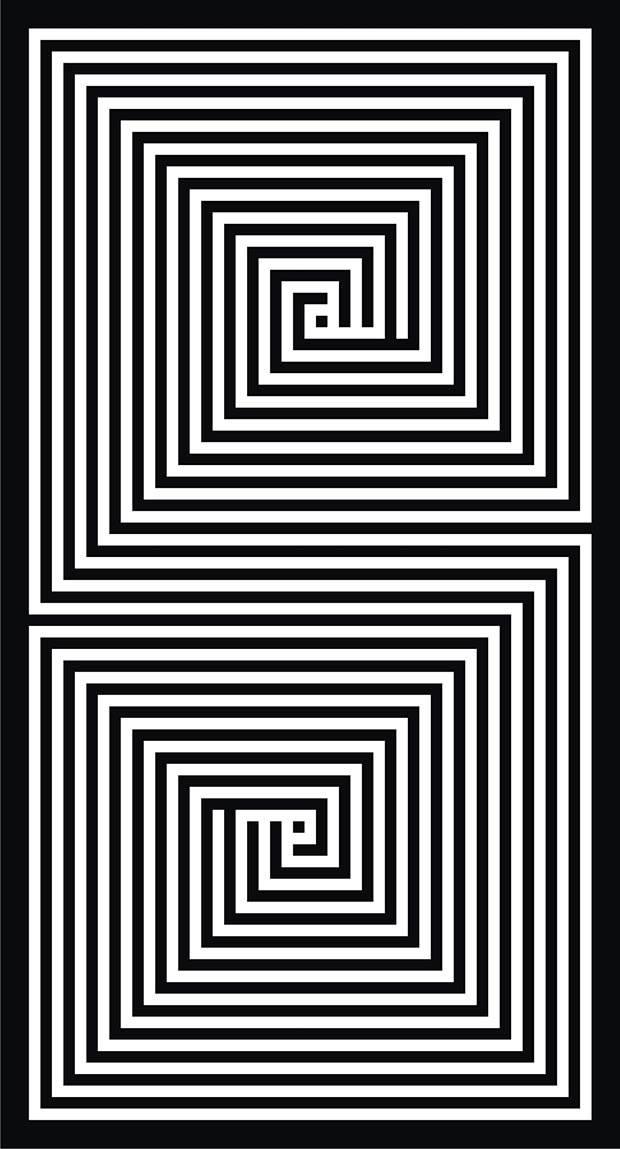 Shakil Akram Khan / Allah 3 / Courtesy of the Artist
Shakil Akram Khan / Allah 3 / Courtesy of the Artist
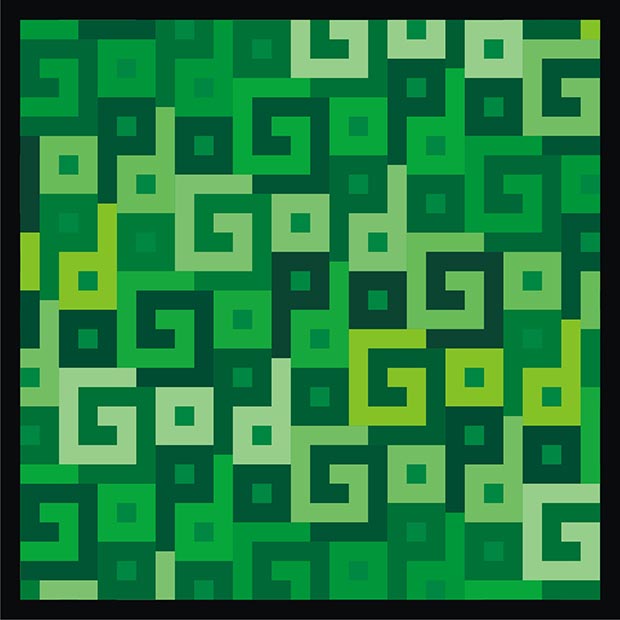 Shakil Akram Khan / Allah, Green / Courtesy of the Artist
Shakil Akram Khan / Allah, Green / Courtesy of the Artist
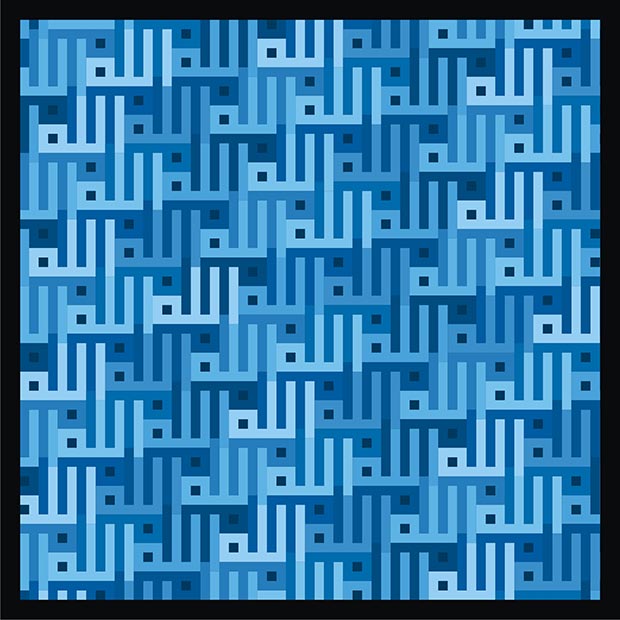 Shakil Akram Khan / Allah, Blue / Courtesy of the Artist
Shakil Akram Khan / Allah, Blue / Courtesy of the Artist
There is an important spiritual aspect in his art, as Khan explains: "What I want to depict in my art is the omnipresence of God in the universe. Not only is God present, but He is present with all His attributes. Thus I have created my art based on the names of God. My designs are a visual representation of invocation to God and His praise and glorification through the repetition of His names. Another dimension of my work is to portray the artistry of God through the order, design and harmony apparent in all things. God is beautiful and He loves beauty. My work is visually captivating to all observers but only those who can read the kufic script will be able to recognize the names of God."
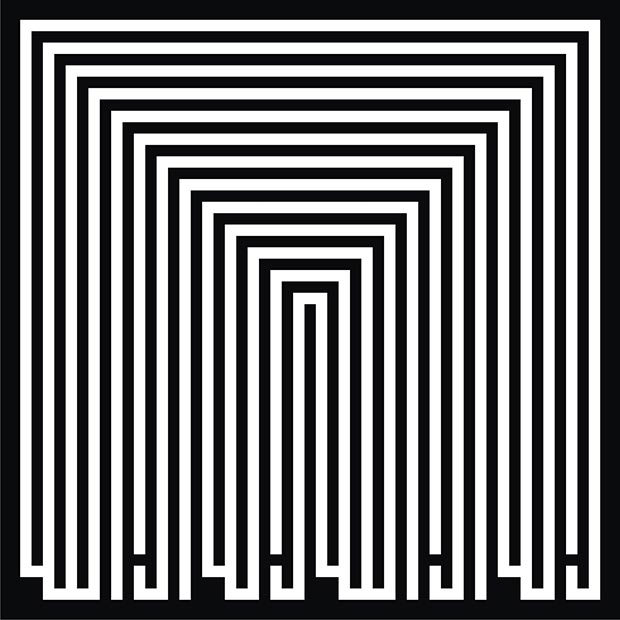 Shakil Akram Khan / Kalimah 1 / Courtesy of the Artist
Shakil Akram Khan / Kalimah 1 / Courtesy of the Artist
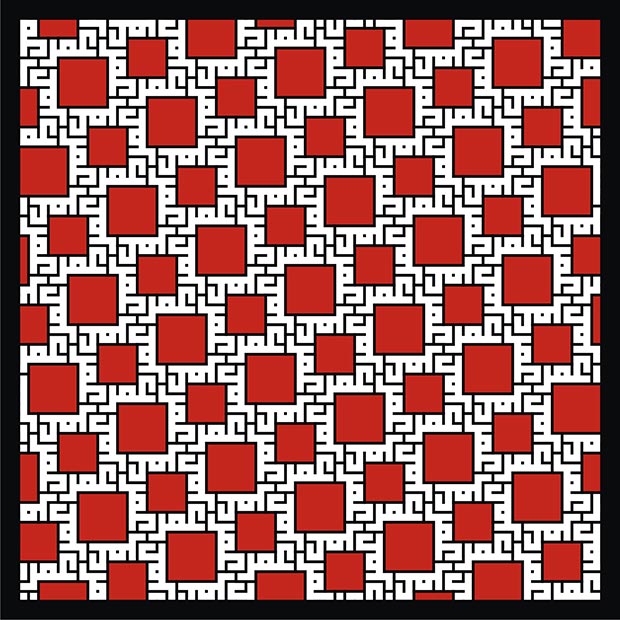 Shakil Akram Khan / Umar / Courtesy of the Artist
Shakil Akram Khan / Umar / Courtesy of the Artist
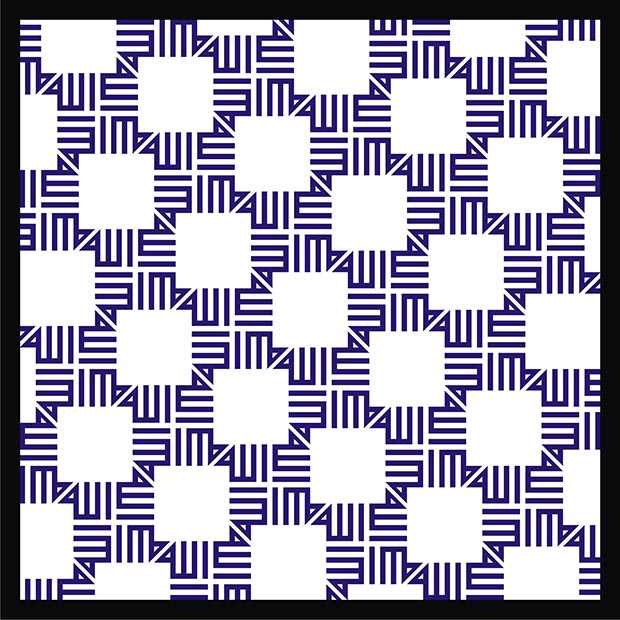 Shakil Akram Khan / Allah 4 / Courtesy of the Artist
Shakil Akram Khan / Allah 4 / Courtesy of the Artist
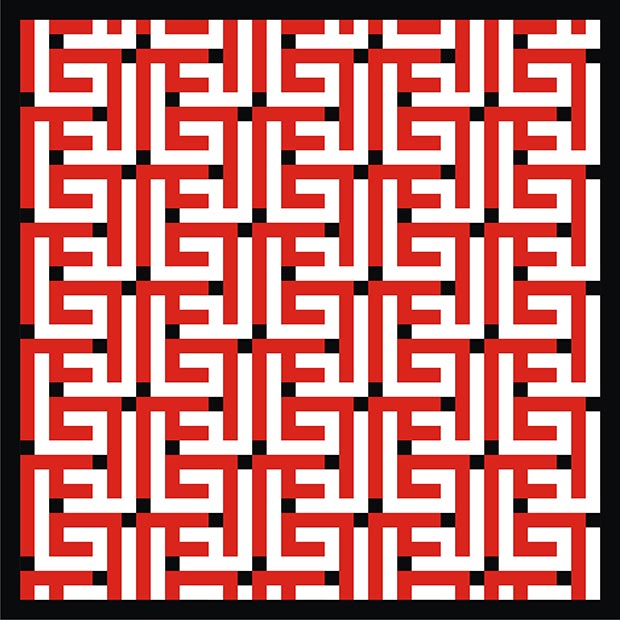 Shakil Akram Khan / Khalid / Courtesy of the Artist
Shakil Akram Khan / Khalid / Courtesy of the Artist
Khan is presently in the process of converting his designs into various artistic mediums such as serigraphs, fused glass and sculptures of wood and metal. Particularly interested in incorporating his designs into architectural projects and large scale works, Khan feels that art should be in public venues, out in the open, where all people can benefit and take delight in and not just those who visit galleries.
Shakil Akram Khan is of Pakistani ancestry, born in Singapore. At the age of seven his family immigrated to Canada. He lived and studied in Montreal most of his life. A self-taught artist, he graduated Engineering at McGill University. Khan is presently living and working in Toronto.
Comments
Add a comment